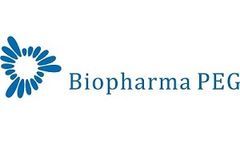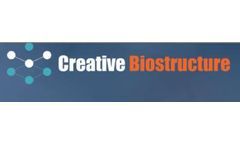Tumor Glycan Targeted Articles & Analysis
49 articles found
In recent years, the field of gene editing has experienced groundbreaking advancements, with CRISPR/Cas9 emerging as a powerful technology for precise genetic manipulation. Among various delivery systems, lentiviruses have garnered significant attention due to their ability to introduce genetic material into both dividing and non-dividing cells, making them an ideal vehicle for gene therapy ...
Introduction PEGylation, the process of attaching polyethylene glycol (PEG) chains to therapeutic molecules, has become a cornerstone in pharmaceutical development. This technique improves the pharmacokinetic and pharmacodynamic properties of drugs, enhancing their stability, solubility, and circulation time while reducing immunogenicity. Since its first FDA-approved application in 1990 with ...
Antibody-drug conjugates (ADCs) combine potent small-molecule drugs with monoclonal antibodies for targeted cancer therapy. A major challenge is loading enough drug onto each antibody without compromising solubility or circulation time. Introducing polyethylene glycol (PEG) linkers between the antibody and drug payload can address this. PEG is hydrophilic, biologically inert, and FDA‐recognized ...
Alfa Cytology has revealed new FAP-targeted therapeutics development services that aim to develop precise and effective cancer treatments. Alfa Cytology has introduced its groundbreaking initiative which targets fibroblast activation protein(FAP) for cancer therapies. These solutions focusing on FAP to improve treatment accuracy and deliver customized projects that strive to obtain more ...
Alfa Cytology has officially released its antibody-drug conjugates(ADCs) development services which demonstrates the dedication to fighting cancer through advanced treatment methods. Alfa Cytology, which stands at the forefront of oncology service provision in New York United States, has announced its sophisticated antibody-drug conjugates(ADCs) development services for cancer. The pioneering ...
Antibody-Drug Conjugates (ADCs) represent a groundbreaking advancement in targeted cancer therapy, combining the specificity of antibodies with the potency of cytotoxic drugs. The development and production of ADCs are complex processes that require a deep understanding of both biology and chemistry, alongside cutting-edge technology. This article delves into the intricacies of ADC development ...
Watertown, MA – March 24, 2025 – Biopharma PEG, a leading supplier of high-quality polyethylene glycol (PEG) derivatives, highlights its innovative product DSPE-PEG-Mannose, an advanced biomedical polymer with significant potential in drug delivery, tumor-targeted therapy, tissue recognition, and adhesion.Structural Advantages of DSPE-PEG-MannoseDSPE-PEG-Mannose is composed of three key ...
Immuno-oncology is an innovative field that utilizes the body’s immune system to combat cancer. By harnessing the natural capabilities of the immune system, immuno-oncology services are revolutionizing the way we approach cancer treatment, offering novel therapies that are changing the prognosis for many patients. Understanding Immuno-Oncology Immuno-oncology focuses on the interaction ...
Most of the old drugs are currently limited in their effectiveness because of poor pharmacokinetics, simple clearance by the body and cytotoxicity. Nanoparticle technology in particular, Nano drug delivery system is getting a lot of attention and application in medicine in the recent years. Since it is small (1100nm), targets well, and stays in the circulation long enough, NPs are a good ...
Breast cancer remains one of the most prevalent malignancies affecting women worldwide, necessitating innovative approaches for effective treatment and research. Among the most promising strategies in this endeavor are the use of tumor models for breast cancer and the development of customized antibody-drug conjugates (ADCs). These advancements not only enhance our understanding of the disease ...
Antibody-drug conjugates (ADCs) are a new class of drugs that combine the advantages of both antibodies and small molecule toxins. Compared with traditional cytotoxins, ADCs have the advantages of strong targeting, less toxic side effects, etc. They can accurately target tumor cells, reduce side effects, and improve the therapeutic effect.ADC drugs are mainly composed of monoclonal antibodies, ...
Dr. Kate Sasser from Tempus led a discussion on the potential of antibody-drug conjugates (ADCs), their challenges in targeting tumor antigens, and the future of cancer treatment with Dr. Daniel Johnson, Dr. Funda Meric-Bernstam, and Dr. Kellogg Parsons. The oncology field is rapidly advancing with the development of antibody-drug conjugates (ADCs), offering new hope for ...
ByTempus
The classical mode of action of small molecule drugs is "occupancy-driven". Since the FDA approved the first oral small molecule targeted therapy for tumors-tamoxifen targeting the estrogen receptor (ER)-in 1977 for the treatment of breast cancer, small molecule drug development has typically focused on screening for high-affinity inhibitors. Small molecule inhibitors can bind to the active sites ...
In order to more effectively deliver chemotherapy drugs, Small Molecule Drug Conjugates (SMDC), Antibody Drug Conjugates (ADC), and Degradation Antibody Conjugates (DAC) have been successively explored and developed, enhancing the therapeutic index while providing selective delivery. What are their similarities and differences? What are their respective advantages? What is the current status of ...
What is a Nanobody?Nanobodies are the smallest functional single-domain antibodies known to be able to stably bind to antigens, and have unique structural and functional advantages. The molecular weight of nanobodies is only 12-15 kDa, which retains the antigen binding ability of traditional antibodies. However, nanobodies have higher solubility and stability, and have unique advantages in ...
Introduction Chemotherapy with anti-tumor agents is currently one of the most important systemic treatments for cancer. However, direct treatment with drugs lacks specificity and sensitivity and tends to attack normal cells indiscriminately, resulting in side effects. Liposomes, as drug carriers, provide a superior solution for maintaining or enhancing the efficacy of chemotherapy while reducing ...
Imagine tiny bubbles, smaller than a red blood cell, carrying powerful medicines directly to diseased cells. This isn't science fiction, it's the cutting edge of drug delivery with drug-loaded liposomes. What are liposomes? Liposomes are microscopic spheres made from phospholipids, the same fatty molecules that make up cell membranes. These phospholipids naturally arrange themselves in ...
Imagine tiny spheres, smaller than a red blood cell, glowing as they navigate the labyrinthine corridors of the human body. These aren't fireflies, they're fluorescent liposomes, a cutting-edge tool in the world of drug delivery and biomedical research. What are liposomes? Liposomes are microscopic bubbles made from phospholipids, the same fatty molecules that make up cell membranes. These ...
The concept of ADCs was first proposed by Nobel Prize winner Paul Ehrlich in 1913. But it was not until 1975, when hybridoma technology began to be used to produce monoclonal antibodies, that the era of ADC drug development truly began. Driven by increasingly mature technology, ADC drugs have gone through three iterations (Fig. 1). Although ADCs have gone through three iterations, current ...
With the rapid development of antibody-drug conjugate (ADC), more and more companies have entered the field of ADC research and development, and various types of ADC technologies and branches have emerged. Bispecific antibody conjugates (BsAb ADCs) are one of the emerging new technologies. The high specificity of bispecific antibodies enables more precise targeting of tumor cells. On the other ...









